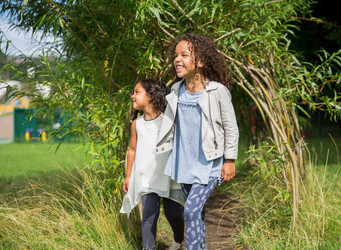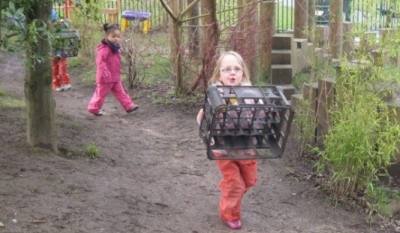As young explorers we scoured the natural environments which nature offered to us for free; from the perilous pursuits of tree climbing, brook jumping and sore knuckles after conker competitions, to watching fascinated over a number of weeks as frogspawn turned to frogs, and the landing of a ladybird on your sleeve was accompanied by the inevitable plea to fly away home!
It can be easy nowadays (especially when you reach a certain age like me!) to view our childhood as a time when we really connected with our local world and found our place within it. We weren’t just observers; we interacted, we learnt key skills and values, we saw then seasons change and understood and were a part of the stories of our local flora and fauna. And, perhaps most importantly of all, we were making links (whether we knew it or not) with how important nature was to our existence because we were able to play in it and be a part of it.
Indeed, as research shows, positive experiences with nature at an early age can help children develop a more caring attitude and encourage them to practice more environmentally-friendly actions as adults. In engaging children at an early age to love their local world, they can learn to help protect and foster the future health of the earth.
It’s fundamentally important then to provide children with as much outdoor and nature-focused play time as possible. Unfortunately, and for a number of reasons, it’s much harder for them to get out and about to explore and play in inspiring and captivating natural environments. In fact, according to a recent study of 12,000 parents across ten countries led by Persil, children in the UK are now among the most housebound and screen-addicted in the world with three quarters spending less time playing outside than the recommended daily period of outdoor exercise for prisoners!
The study found that the biggest excuse given globally for keeping children indoors is not stranger danger or children’s own preferences for playing inside but the weather! 74 per cent of British parents said their children have an hour or less of outdoor play a day compared to only 65 per cent of those in the US and 56 per cent worldwide.
At Eureka!, we’re passionate advocates of outdoor play whatever the weather, and there are lots of opportunities for children to connect with nature, including in our Sensory Garden. As adults, we need to provide as many opportunities as possible for children to explore and engage with the rich tapestry of environmental stories presented through our flora and fauna. And by doing this in our local areas now, we’re sowing the seeds of wonder, curiosity and care to create a connection with nature which in turn may lead to involvement and action to protect our planet in the future. So even if it’s raining, put your waterproofs and wellies on and try these great nature focused activities with your children:
-
Spring into action
Explore your local park and look out for signs that spring has arrived. Search for frogspawn; spot birds carrying items for their nests; are the crocuses and daffodils blooming?
-
What a Stinker!
Did you know that wild garlic is also known as Stinking Jenny? It grows naturally in the UK between January to May in damp woodland. Go for a walk and see who can pick up the garlic scent and find the source of the pong. Wild garlic has long dark green leaves with a stem that has little white flowers. Try cooking a meal together using your garlic when you get back home.
-
Spot the tree
See if you can spot different types of trees and collect a leaf from each one e.g. Oak, Ash or Elm. Create a tree book at home, and work together to find some interesting facts about the trees to jot down by looking in books or searching online.
-
Create an explorers box
Decorate an old shoe box and collect interesting things every time you visit the park or the woods that can be kept safely in your special box. You can always take a camera as well and put pictures you have taken in the box.
This blog originally appeared as a column in the Halifax Courier.





 By: Sophie Ballinger
By: Sophie Ballinger
